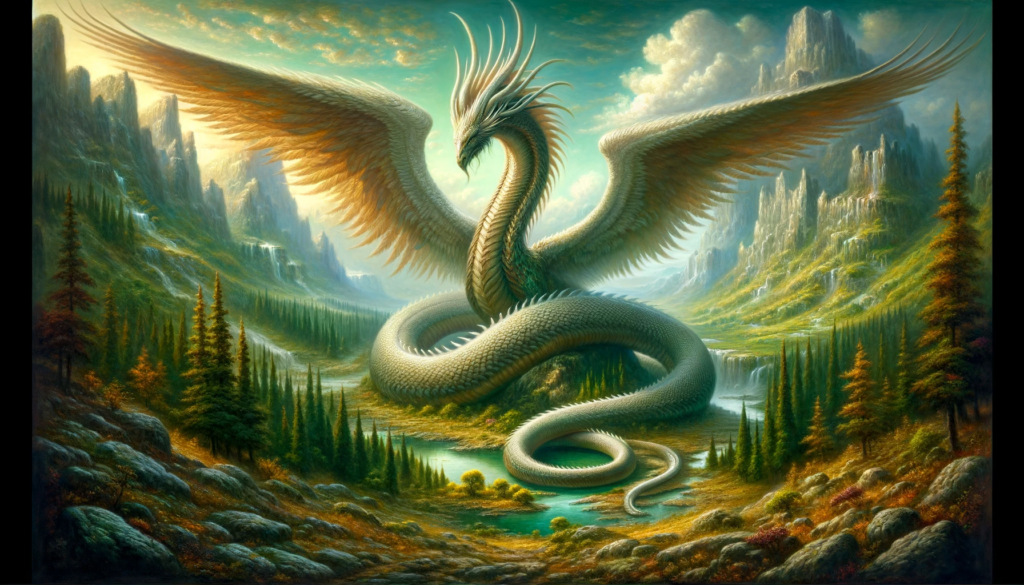Introduction
Dragons, the mythical creatures that have captured the human imagination for centuries, come in various forms and legends from around the world. Among these awe-inspiring creatures is the enigmatic Amphithere dragon, a serpent-like beast with wings and a unique place in the pantheon of dragon mythology. In this article, we will delve into the fascinating world of the Amphithere dragon, exploring its origins, characteristics, and its enduring legacy in folklore.
The Origins of the Amphithere
The word “Amphithere” finds its roots in Greek mythology, where “amphi” means “on both sides” and “there” refers to “wild animal” or “beast.” This aptly describes the creature’s defining characteristic: wings that run along the entire length of its serpentine body. Unlike the more common Western dragon, which typically has four legs and a pair of wings, this dragon is unique in its limbless design.
Legends and Lore
The Amphithere dragon has been mentioned in various mythologies and cultures throughout history. In Greek mythology, it is often associated with the god Apollo, believed to be the protector of the Oracle at Delphi. The presence of this dragon-like creature in Delphi symbolised divine protection and the oracular power of the site.
In medieval European folklore, this dragon was sometimes seen as a guardian of treasure, much like the more famous Western dragon. It was believed that these serpentine dragons would fiercely protect their hoards of riches, making them formidable adversaries for adventurous knights and would-be treasure hunters.

Characteristics of the Amphithere
The most distinctive feature of the Amphithere dragon is its winged serpent form. These wings are typically feathered, resembling those of birds, which further distinguishes them from other dragon types. Their bodies can range in size from that of a small snake to a colossal serpent, depending on the specific legends and stories.
They are often depicted as being intelligent and wise creatures, in stark contrast to the brute force and destructive tendencies attributed to other dragon species. Some myths even suggest that they possess the ability to speak, making them potential sources of wisdom and guidance.
Cultural Significance
The Amphithere dragon’s cultural significance extends beyond mythology and folklore. It has appeared in various forms of art, literature, and heraldry throughout history. In medieval Europe, these creatures adorned the coats of arms of noble families, symbolising qualities like courage, wisdom, and protection.
In literature, this dragon has made appearances in fantasy novels, where it is often portrayed as a noble and wise creature, serving as a mentor or guardian to the story’s protagonists. This depiction highlights the creature’s enduring appeal as a symbol of wisdom and guidance.
Conclusion
The Amphithere dragon, with its unique characteristics and diverse cultural interpretations, stands as a testament to the rich tapestry of dragon mythology. It’s serpentine, winged form and associations with wisdom and protection make it a compelling figure in the world of fantasy and folklore. Whether as a guardian of treasures or a symbol of divine protection, the Amphithere continues to capture our imaginations and reminds us of the enduring power of mythological creatures in shaping our stories and beliefs.
For more dragon content please subscribe to the Everything Dragon YouTube Channel or follow us on Instagram




